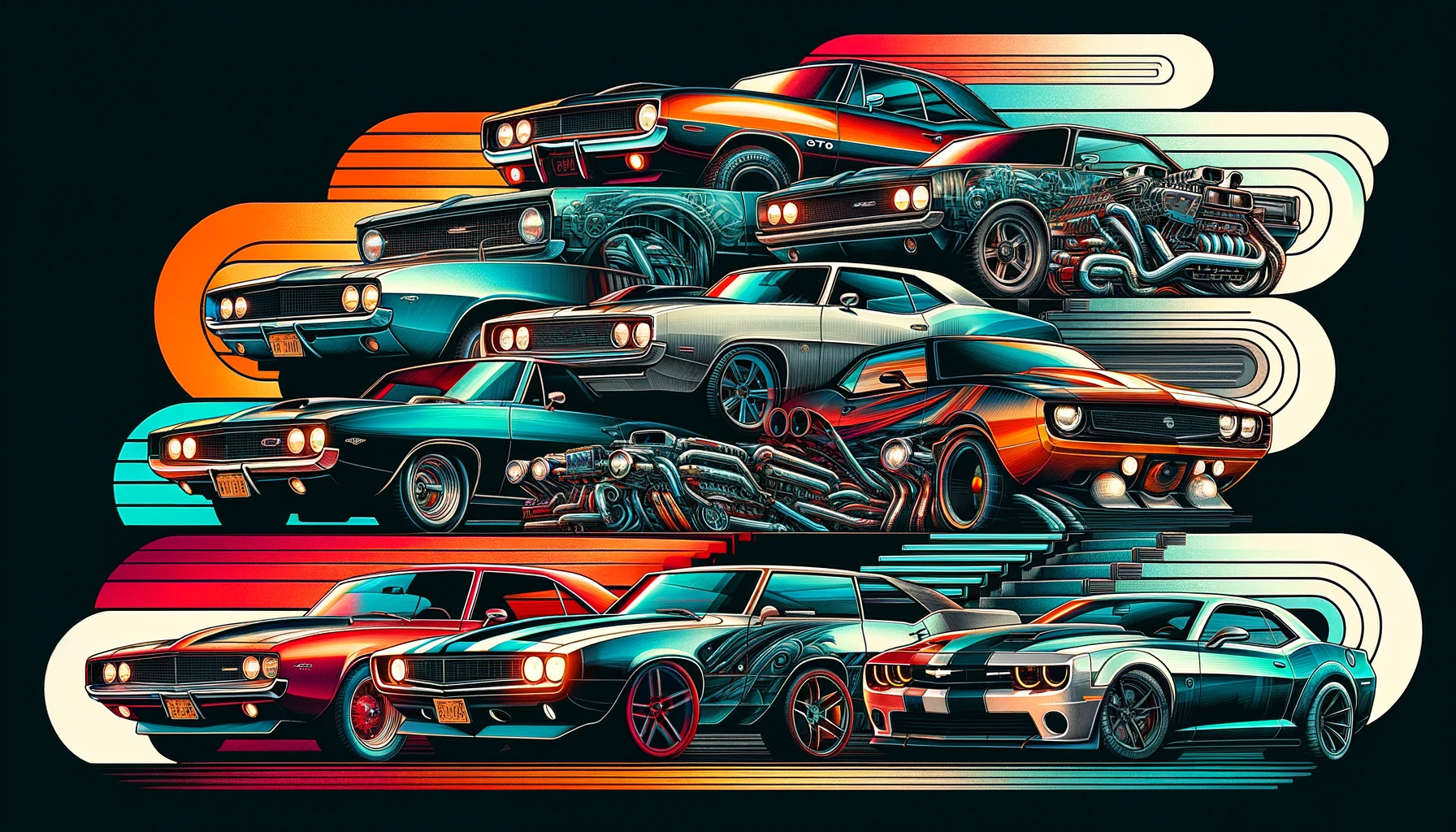Muscle Car Evolution: A Journey Through Time
The Evolution of Muscle Cars – From Powerhouses to Modern Icons
Introduction
Muscle cars have long been a symbol of raw power and automotive freedom. From their roaring V8 engines to their iconic designs, these vehicles have left an indelible mark on car culture. This article explores the journey of muscle cars, from their inception to their current status in the automotive world.
Early Beginnings (1960s)
The muscle car era unofficially began in the 1960s, a time when American automakers started producing affordable, high-performance vehicles. The term “muscle car” itself was coined to describe these powerful machines, characterized by their large V8 engines, rear-wheel drive, and emphasis on speed and acceleration over luxury. Early examples, like the Pontiac GTO and the Chevrolet Camaro, set the stage for a new automotive trend focused on performance.
The Golden Era (1970s)
The 1970s are often referred to as the golden era of muscle cars. This period witnessed the peak of their popularity, with automakers pushing the limits of power and design. Models like the Ford Mustang, Dodge Charger, and Plymouth Barracuda became household names, offering unprecedented power and performance at relatively affordable prices. These years also saw significant technological advancements, including improved suspension systems and more powerful engines.
Challenges and Evolution (1980s-1990s)
The late 1970s and 1980s brought significant challenges for muscle cars. The oil crises and stricter environmental regulations forced manufacturers to rethink their approach. Engine sizes were reduced, and a shift towards more fuel-efficient and environmentally friendly models was seen. This era witnessed a transformation in muscle cars, with a focus on aerodynamic designs and smaller, more efficient engines, diverging from the traditional muscle car formula.
Modern Muscle Cars (2000s to Present)
The turn of the millennium marked a resurgence in the popularity of muscle cars. Modern models like the Chevrolet Camaro, Dodge Challenger, and Ford Mustang have reignited the passion for high-performance vehicles. These cars blend the classic muscle car aesthetic with contemporary technology, offering better handling, advanced safety features, and improved fuel efficiency without sacrificing power. They symbolize a perfect fusion of the past and the present, catering to both nostalgia and modern-day requirements.
Conclusion
Muscle cars have evolved significantly over the decades, adapting to changing times while maintaining their core appeal. Today, they stand not just as powerful machines, but as symbols of an era and a testament to the enduring allure of performance-driven design. As they continue to evolve, muscle cars remain a vital part of car culture, symbolizing freedom, power, and a relentless pursuit of performance.
